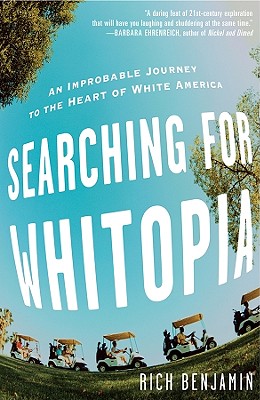New York Times columnist David Brooks once wrote a very funny appraisal of Seattles smug conformity in Bobos in Paradise. Now, like a younger, blacker David Brooks, think-tank scholar Rich Benjamin ventures among the insular Caucasian tribe in Searching for Whitopia (Hyperion, $24.99). He begins his three-month residencies in Idaho, Georgia, and Utah with a demographic hook: exurban and rural communities that are 90 percent white (or higher), and whose rapid population growth is coming mainly from non-Hispanic whites. Also: by 2042, according the U.S. Census, non-Hispanic whites will be a minority in this country. So what does it mean that these ethnic redoubts cling to their notions of majority tradition and values? Benjamin proves a surprisingly affable, Brooksian tour guide through Whitopia. Hes equally nice to evangelicals and Republicans, even while tut-tutting their looming obsolescence. In rural Whitopias, like the Idaho panhandle, locals can hardly afford to live in whats becoming an Aspenized resort economy. In exurban Whitopias, the cost of commuting and housinghello, subprime mortgage crisismay also prove unsupportable. Yet Benjamin, who enjoys golf and poker parties, isnt one to gloat. His tone seems almost pitying in regard to these holdouts. And his index lists our states whitest region (at 91 percent), Jefferson County, in case youre thinking of relocating to Port Townsend. BRIAN MILLER
Tue., Nov. 3, 7:30 p.m., 2009




